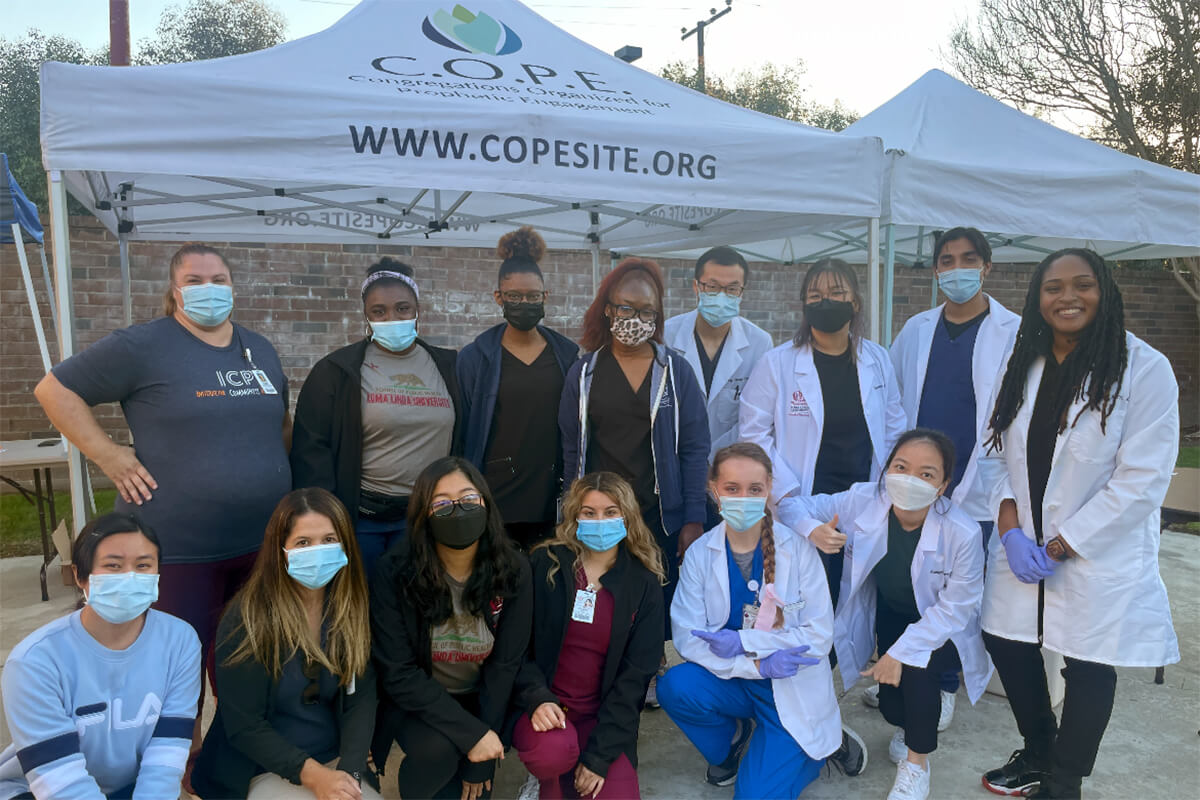AACP’s new Transformation Center will promote and disseminate innovations in pharmacy practice and education to further optimize patient care.
By Athena Ponushis
Against the backdrop of a pandemic, pharmacists are taking more active roles in public health. Pharmacy schools are rethinking the reach of education, delivering healthcare to communities that need it. To amplify this work, AACP has established the Center to Accelerate Pharmacy Practice Transformation and Academic Innovation. The AACP Transformation Center hopes to become a center of attention, lifting up the work of members to help pharmacy reach the heights of its potential. The center will share the stories of members who are reaching people in need of healthcare so pharmacy can further its mission to improve health outcomes for all populations.
“The launch of the center is very timely because we are in an era of change,” noted Melissa Murer Corrigan, executive director of the center. “A number of changes have happened the last couple of years related to curriculum, teaching methods and innovation. We have also seen innovations in practice that we could not have envisioned before. The center will help build and scale these changes. I think that’s one of our greatest endeavors as a center, to not only promote, highlight and encourage innovation, but allow it to scale up and happen in more places.”
Corrigan sees the center’s mission to accelerate pharmacy practice transformation and academic innovation as a true means to improve health outcomes and reduce health disparities. She pointed to Dr. Jacinda Abdul-Mutakabbir, (“Dr. JAM”) assistant professor of pharmacy at Loma Linda University School of Pharmacy and a critical care infectious disease pharmacist, as an example of someone working to magnify and rectify health inequities in minoritized communities. She saw that the COVID-19 vaccine clinics in California were not reaching the most vulnerable populations. She talked with her journal club and her colleagues and asked, ‘What can we do? What can we do differently?’ They reached out to Black churches, engaging pastors, to reach the Black community where they live, learn and pray. Vaccine rates increased significantly and Dr. JAM’s work was published in The Lancet Global Health.
“A lot of the initiatives that we are talking about in pharmacy relate to education and that’s what Dr. JAM provided. She questioned why is there vaccine hesitancy, how can we educate the most vulnerable about the vaccines and what does that look like moving forward. She has continued to support the important role of the pastors and has worked collaboratively. These are the principles that we are talking about with the center,” Corrigan said. “So, I just stand in awe of Dr. JAM and others who are out there trying things. It’s their work that we want to uplift at the center.”
Opportunity Abounds
Corrigan has built her career on blazing trails and bringing groups together. She led the national Scope of Pharmacy Practice Project in 1992 and guided the creation of the Pharmacy Technician Certification Board in 1995. In her role as executive director of the transformation center, she intends to work with pharmacy organizations as well as other disciplines in the broader healthcare ecosystem. She’s eager to learn from those doing innovative work in higher education, connect with foundations supporting innovative work, like the Gates Foundation or Lumina Foundation, and she’s interested in talking with people who are doing disruptive things in areas like digital health.
“We are not alone in doing this work,” Corrigan said. “And I think the transformation center has an openness to it, what I call a ‘come with us’ attitude. We want to know, how do we widen the path? How do we bring groups together? We will look at strategy, mission and values, and say, ‘Join us.’ That’s how we will align our efforts.”
When Corrigan thinks of all the work member institutions and individual members are doing, when she thinks of folding their work into the center, she hears one word clearly: opportunity. She foresees the center elevating values that are intrinsic to pharmacy—curiosity, accessibility, empathy—as well as what she believes to be the power of transformation: collaboration.

“We are looking at project models we can replicate, scale and grow to truly focus on medication use optimization, improving health outcomes and reducing health disparities. We are looking at our relationships with other healthcare disciplines. How can we learn from them? And we are looking at how do we address big-picture issues, whether that be related to policy or building up our pharmacy workforce pipeline, what does that look like?” she said.
Corrigan believes the pervasiveness of health disparities and the toll of the pandemic affirm the need for the transformation center. “We need the center now because pharmacists are mission critical in the healthcare ecosystem,” she emphasized. “We have been through a lot the last couple of years, and if anything, I think covid has taught us that having pharmacists around the table is vital.”
She considers innovations that are happening now, such as a pharmacist in Iowa who created a vaccine taxi program for community impact, the University of Minnesota College of Pharmacy’s project, “Advancing Kidney Health Through Optimal Medication Management,” and the Academia-CPESN Transformation (ACT) Pharmacy Collaborative, a collaboration between colleges/schools of pharmacy and clinically integrated networks of community-based pharmacies. “There are so many things happening that we want to amplify,” she said. Sometimes a pharmacist or a professor will have an idea but they don’t know how to follow it through. That’s where a case study or a toolkit comes in. The center hopes to become a hub where these resources reside so those who are willing will find ways to engage in interprofessional collaborative care.

